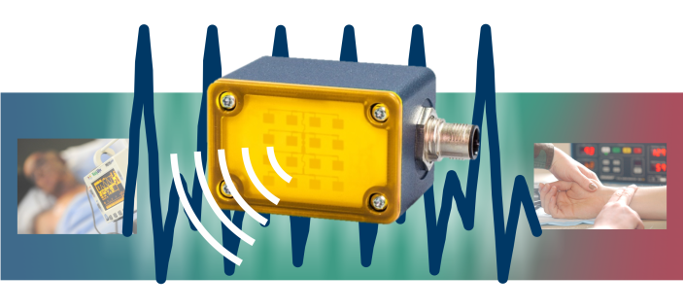GUARDIAN
More quality of life and safety for people in need of care: Innovative contactless monitoring of vital parameters
(Third Party Funds Group – Sub project)
Title of the overall project: GUARDIAN

Project start: 01/01/2017
Acronym: GUARDIAN
Funders: BMBF / Verbundprojekt
Abstract
Motivation
In the care of seriously ill people, the recording of breathing and heartbeat is an important tool for crisis detection. The recording via electrodes and cables that has been necessary up to now is prone to interference and restricts the self-determination and quality of life of those in need of care. The GUARDIAN project aims to enable the contactless and continuous recording of vital parameters.Goal and strategy
In GUARDIAN, the contactless recording of vital parameters from a distance of several meters using a multimodal high-frequency sensor is being developed. For this purpose, a weak electromagnetic high-frequency signal is emitted and its change is analyzed. Due to the high distance resolution, movements causing respiration and heartbeat can be extracted from the measurement signal and analyzed. In the process, superimposed motion artifacts must be compensated for. GUARDIAN will thus make it possible to detect complaints such as pain and shortness of breath as well as health crises such as cardiac arrhythmias and cardiovascular arrest immediately and automatically. At the same time, the ethical, legal and social issues of the procedure as well as its effects on palliative and intensive care, people in need of care, care professionals and relatives will be intensively investigated.
Innovation and perspective
By using six-port interferometry as a new concept, all body movements can be recorded contactlessly from a distance of up to several meters with a previously unattainable distance resolution in the micrometer range, and respiration and heartbeat can be extracted. The consortium partners see great potential in the technology to be developed for monitoring the health and complaints of people in need of care in hospitals, but also in the outpatient sector in nursing homes and at home.Filmclip:
Presse:
- Radar statt Stethoskop? (idw – Informationsdienst Wissenschaft)
- Radar kann Herztöne messen (Deutsches Ärzteblatt)
- Mobiles Radar ersetzt das Stethoskop (Heise)
- Stethoskop: Gerät oder Geschmeide? (DocCheck News)
- Can Radar Replace Stethoscopes (MedicalDesign & Outsourcing)
- Can radar replace stethoscopes? (EurekAlert!)
Publications
- , , , , , , , , :
A Radar-Based Vital Sign Sensing System for In-Bed Monitoring in Clinical Applications
German Microwave Conference 2020 (Cottbus, 09/03/2020 - 11/03/2020)
BibTeX: Download - , , , , , , :
A Contactless System for Continuous Vital Sign Monitoring in Palliative and Intensive Care
2018 Annual IEEE International Systems Conference (SysCon) (Vancouver, Kanada, 23/04/2018 - 26/04/2018)
DOI: 10.1109/SYSCON.2018.8369507
BibTeX: Download - , , , :
Contactless Person Identification Using Cardiac Radar Signals
2018 IEEE International Instrumentation and Measurement Technology Conference (I2MTC) (Houston, Texas, 14/05/2018 - 17/05/2018)
DOI: 10.1109/I2MTC.2018.8409645
BibTeX: Download - , , , , , , , , , , :
A Clinically Evaluated Interferometric Continuous-Wave Radar System for the Contactless Measurement of Human Vital Parameters
In: Sensors 19 (2019), Article No.: 2492
ISSN: 1424-8220
DOI: 10.3390/s19112492
URL: https://www.mdpi.com/1424-8220/19/11/2492
BibTeX: Download - , , , , , :
Respiration Extraction from Radar Heart Sound Measurements
International Engineering in Medicine and Biology Conference (Berlin, 23/07/2019 - 27/07/2019)
DOI: 10.1109/EMBC.2019.8857925
BibTeX: Download
